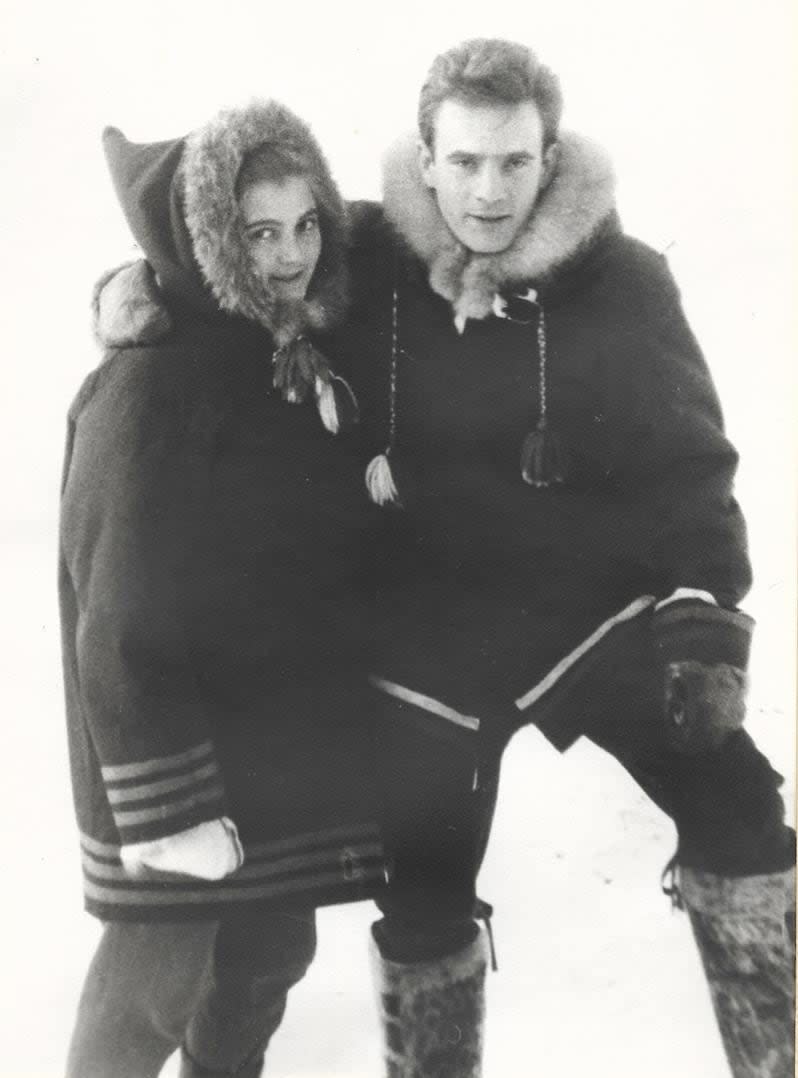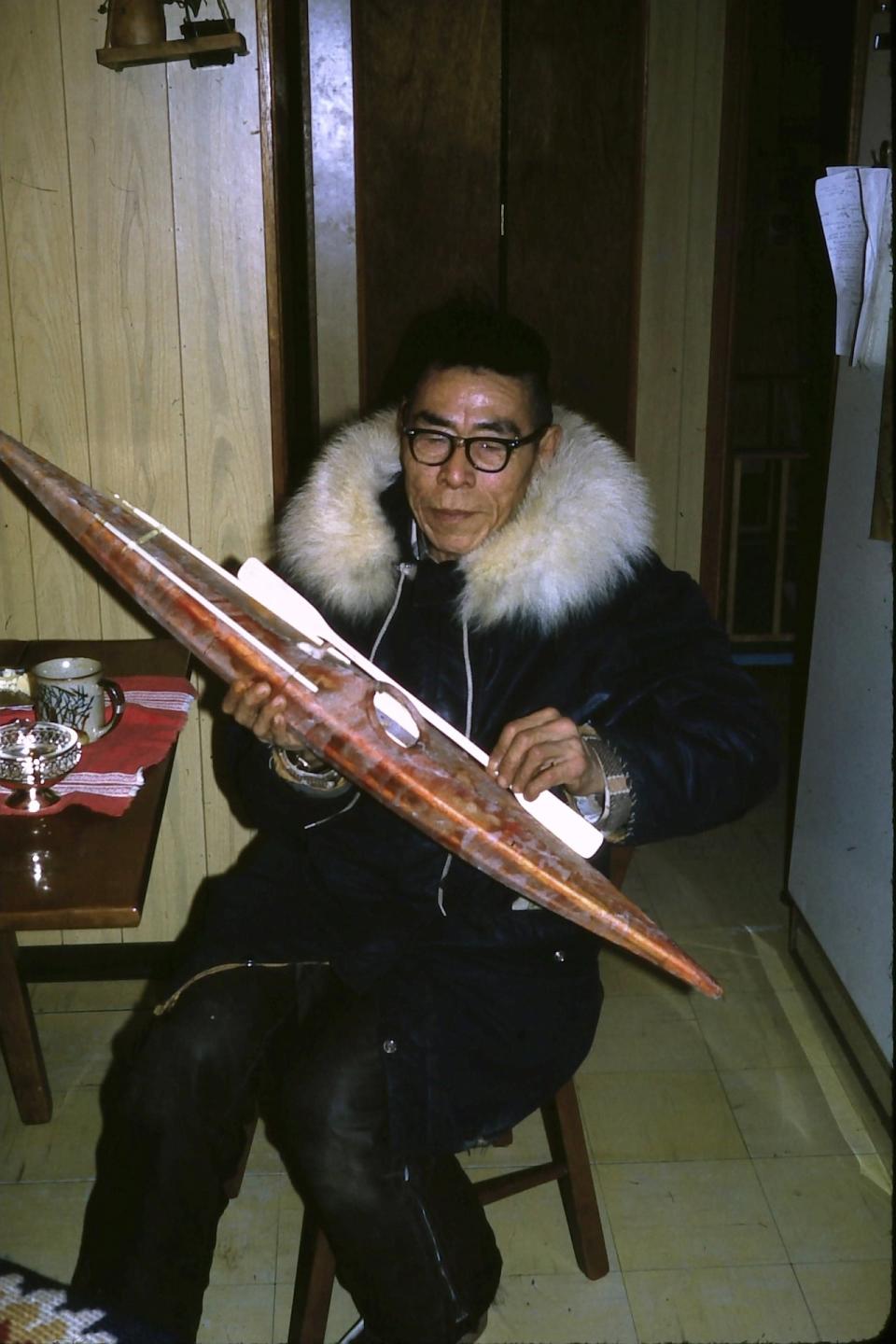1970s recordings from Nunavut include stories of contact with early explorers and Inuinnait daily life

Hundreds of hours of old audio recordings in Inuktitut and Inuinnaqtun are being digitized to preserve and share stories of life in Nunavut in the 1900s.
The tapes were collected by Janet and the late George Diveky, a married couple who taught in Nunavut in the 1970s.
Janet, who currently lives in Yellowknife, said it was her husband George, an anthropologist, who spearheaded the recordings, some of which were created in Kugaaruk and Kugluktuk.
"He was always fascinated with the culture … so when we moved to Kugaaruk he discovered these wonderful people who told stories to their kids at bedtime, legends and people with a wealth of knowledge," Janet said.

Janet and George Diveky when they were living in the Canadian Arctic in the late 1960s. (Submitted by Janet Diveky)
The tapes consist of stories of everyday life, Inuit legends and recollections of meeting early explorers including Knud Rasmussen. Some of those being interviewed were elders at the time of the recordings, which means some of the stories are estimated to date back to the early 1900s.
When George died in 2019, Janet said she did not want the stories to be lost.
The tapes were shared with the Pitquhirnikkut Ilihautiniq / Kitikmeot Heritage Society in Cambridge Bay. The project was granted $24,805 by Library and Archives Canada, through the Listen, Hear Our Voices initiative.
Within the collection, is a trove of tapes recorded in Kugluktuk, which include details about Inuinnait life and history. The stories are told in the Inuinnaqtun language of the central Arctic.
The Inuinnaqtun language has many linguistic similarities with Inuktitut. However, unlike Inuktitut which in many respects is thriving, the Kitikmeot Heritage Society says there are fewer than 600 fluent Inuinnaqtun speakers and it's estimated that the language will go extinct in less than two generations.
The stories in Inuinnaqtun are being shared on the Inuinnaujugut / We Are Inuinnait podcast – a project led by the Kitikmeot Heritage Society.

Emily Angulalik is the project manager with the Kitikmeot Heritage Society (Kate Kyle/CBC)
Emily Angulalik, the executive director of the society, says preserving and sharing Inuinnait stories is important for all generations.
"I'm grateful and I'm looking forward to hearing the sounds and the terminology that isn't used today, where we can learn from and we can take pride in our language," Angulalik said.
Brendan Griebel, manager of collections and archives with the Kitikmeot Heritage Society, has been working on the project. The process of digitizing the recordings, some of which have not been played in more than 50 years, was no easy task, he said.
Most of the stories were recorded on reel-to-reel cassettes, along with cassette tapes.
The materials were sent to a company in Ontario that has been working on cleaning the tape, digitizing the material and restoring the sound quality.

Community members share stories in Nunavut in the 1970s. During that time Janet and George Diveky recorded interviews with elders and community members in Kugaaruk and Kugluktuk. (Submitted by Janet Diveky)
The work is exciting on an anthropological level, Griebel said, but also for community members.
"For these communities, for a lot of people, it means getting to hear their loved ones again," Griebel said.
Since December, six of the stories from the Diveky tapes have been released on the Inuinnaujugut podcast.
The stories included in the tapes from the '70s include tales of brothers, ravens and the creation of light.
Janet said she thinks her husband would have been happy to see the stories carry on.
"You know, George was very modest, so I think he would feel very gratified that his work is being recognized."


